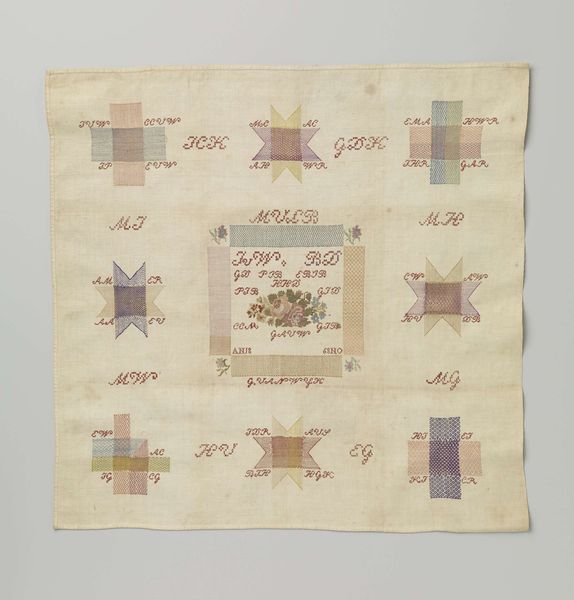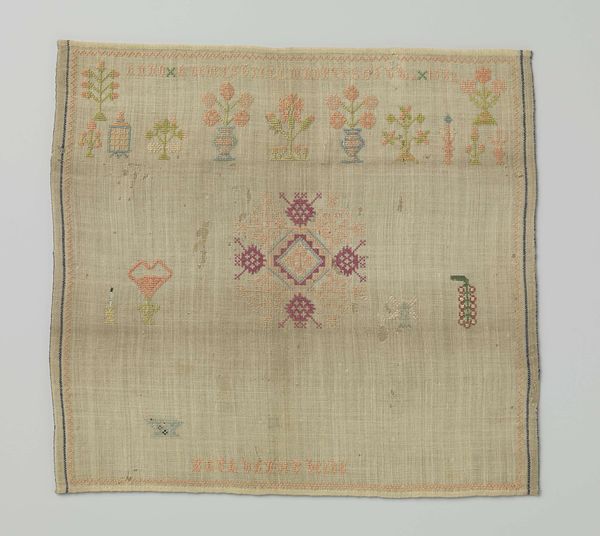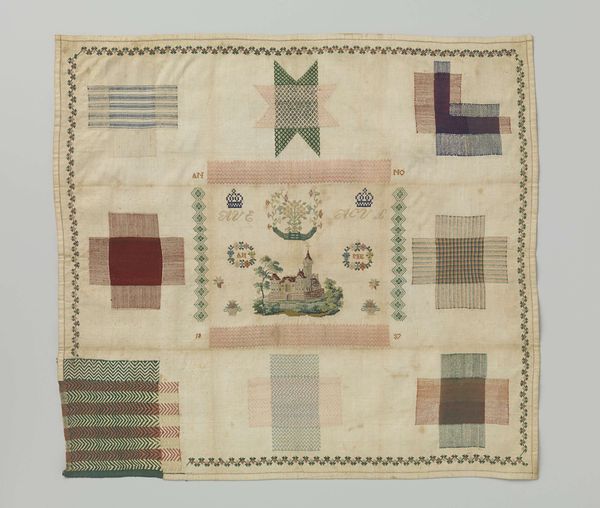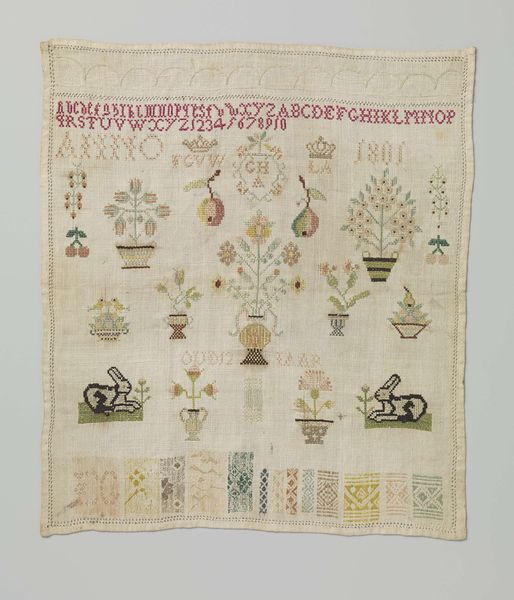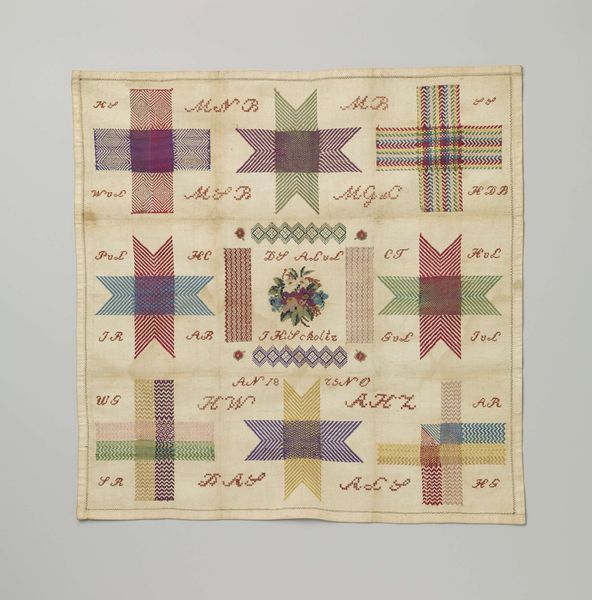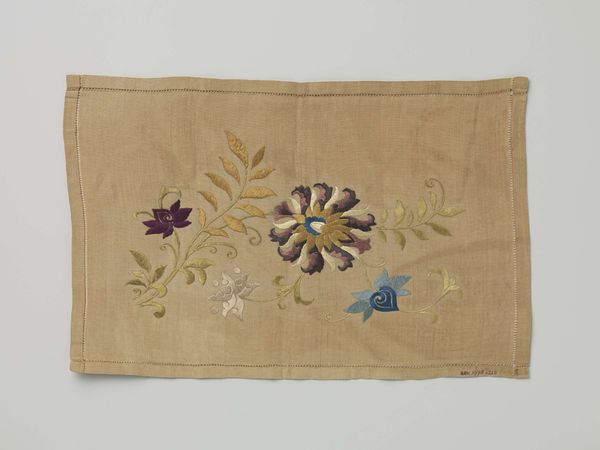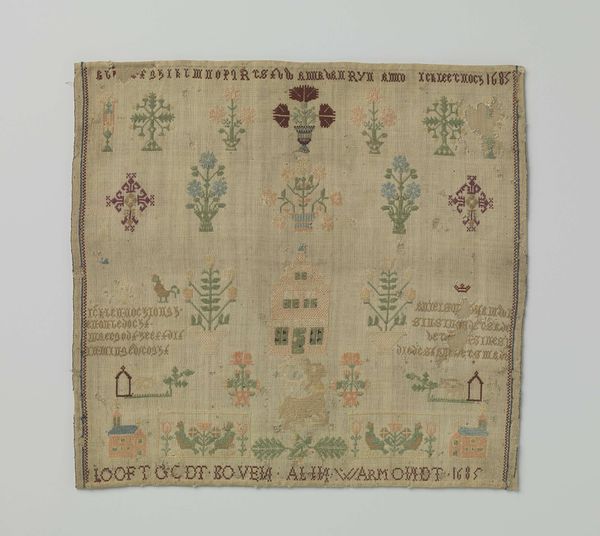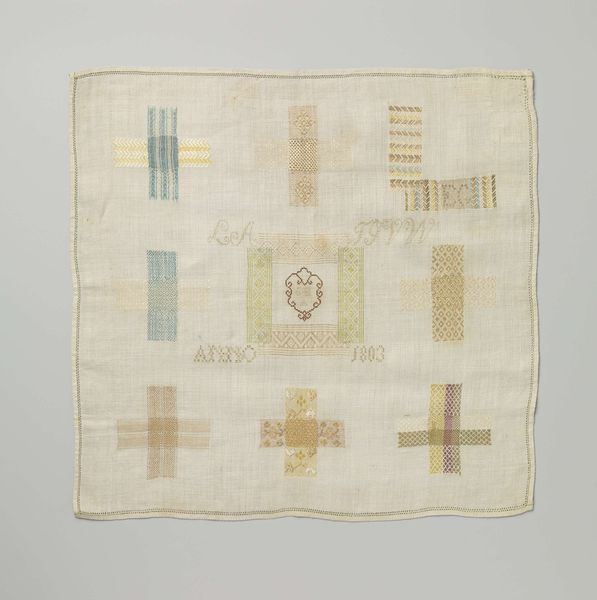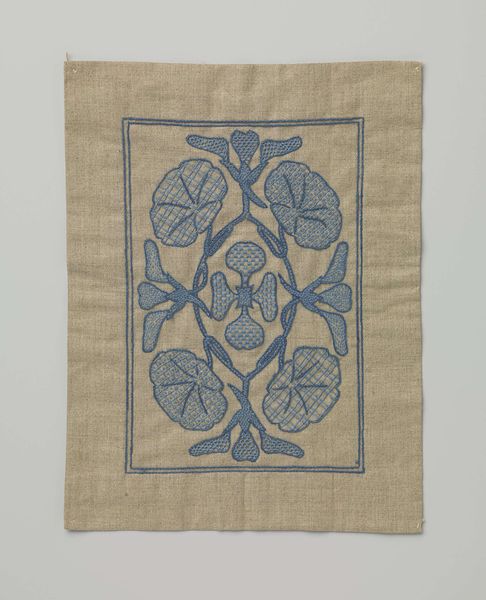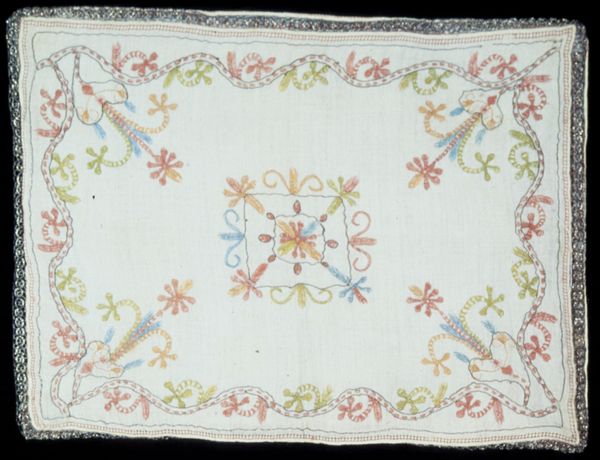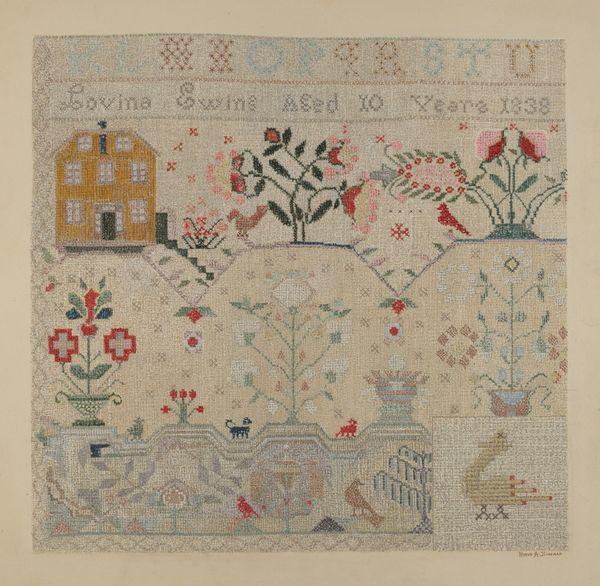
textile
#
aged paper
#
textile
#
geometric
#
decorative-art
Dimensions: length 28.0 cm, width 27.0 cm
Copyright: Rijks Museum: Open Domain
This sampler was stitched with colored silk on cotton muslin by A.C. van Duuren. While undated, it presents images and texts common in the tradition of needlework samplers from the 17th through the 19th centuries, especially in the Netherlands and other parts of Europe. Samplers like this one served both practical and cultural purposes. The alphabet, numerals, and motifs demonstrated the maker’s needlework skills. The act of stitching these elements was not merely decorative; it was a form of education and discipline, instilling literacy and numeracy alongside domestic skills. Looking closer, we see a cultural snapshot of the time. The presence of alphabets reflects a growing emphasis on literacy, while the geometric patterns and floral motifs mirror popular design elements in Dutch art and domestic life. The creation of samplers also reflects the gendered expectations of the time. Girls and women were primarily responsible for household textiles. To truly understand this sampler, one might consult historical archives of domestic craft, educational materials, and records of women's lives. What we see in this small textile is a web of social values and institutional practices expressed through the patient work of a needle.
Comments
No comments
Be the first to comment and join the conversation on the ultimate creative platform.
